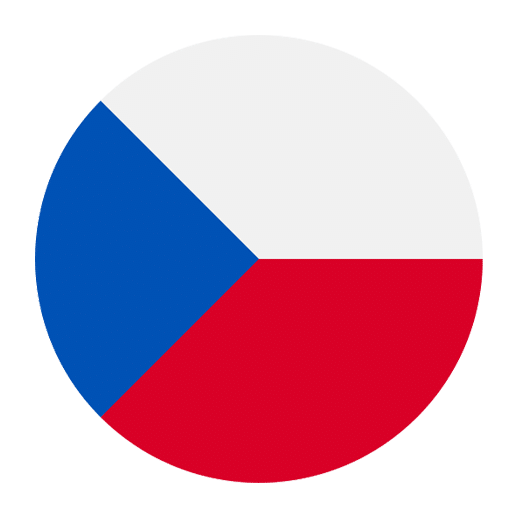The Czech language, a member of the West Slavic language group, boasts a rich tapestry of dialects and regional variations that reflect the diverse history and culture of the Czech Republic. While the standard form of Czech, known as “Standard Czech” or “Spisovná čeština,” is used in official settings, media, and education, the colloquial speech heard in everyday conversations can vary significantly from one region to another. Understanding these variations not only enhances language comprehension but also provides deeper insights into the Czech identity and way of life.
Historical Context and Development of Czech Dialects
Czech dialects have evolved over centuries, influenced by various historical, political, and social factors. The formation of these dialects can be traced back to the early medieval period when the Slavic tribes settled in Central Europe. Over time, the geographical isolation of communities, combined with political borders and social structures, led to the development of distinct regional speech patterns.
The 14th and 15th centuries were particularly pivotal for the Czech language. The Hussite Wars and the subsequent spread of the Hussite movement contributed to the dissemination of Czech literature and ideas, further shaping the language. The Renaissance period saw a standardization of Czech, but regional dialects continued to thrive in everyday communication.
Major Czech Dialects
Czech dialects are traditionally classified into three main groups: Bohemian, Moravian, and Silesian. Each of these groups encompasses several sub-dialects, reflecting the nuanced linguistic landscape of the Czech Republic.
Bohemian Dialects
Bohemian dialects are spoken in the western part of the Czech Republic, known as Bohemia. This region is home to the capital city, Prague, and is the most populous area of the country. The Bohemian dialects can be further divided into:
– **Central Bohemian**: This dialect is spoken in and around Prague. It has heavily influenced the standard form of Czech due to the political and cultural significance of the capital. Central Bohemian dialect is characterized by the dropping of some vowel sounds and the assimilation of consonants, making it sound smoother compared to other dialects.
– **Eastern Bohemian**: Found in the eastern part of Bohemia, this dialect features a distinct pronunciation of certain vowels and consonants. For instance, the vowel “a” is often pronounced as “ä,” and there is a tendency to soften the consonant “t” to “ť.”
– **Southwestern Bohemian**: Spoken in the regions of Plzeň and České Budějovice, this dialect is known for its unique intonation patterns and vocabulary that reflect the area’s historical ties with neighboring German-speaking regions.
Moravian Dialects
Moravia, located in the eastern part of the Czech Republic, is known for its rich cultural traditions and diverse dialects. Moravian dialects are divided into several sub-groups, each with its distinct features:
– **Central Moravian (Hanácké)**: This dialect is spoken in the Haná region and is known for its melodious and rhythmic intonation. One of the distinguishing features of Central Moravian is the use of the vowel “é” instead of the standard “ý.”
– **Eastern Moravian (Moravian-Slovak)**: Found in the regions bordering Slovakia, this dialect exhibits significant influence from the Slovak language. It includes unique vocabulary and phonetic characteristics, such as the pronunciation of “ch” as “h.”
– **Western Moravian**: This dialect is spoken in the western parts of Moravia and shares some similarities with the Central Bohemian dialect. However, it retains distinct features, such as the use of the vowel “o” instead of “u.”
Silesian Dialects
The Silesian dialects are spoken in the northeastern part of the Czech Republic, in the historical region of Silesia. These dialects are less prominent due to the smaller population of the area but are nonetheless an important part of the Czech linguistic landscape.
– **Lachian**: This dialect is spoken in the Lachian region and exhibits a strong influence from Polish due to the proximity to the Polish border. It features a distinct pronunciation of vowels and consonants, as well as unique lexical items.
Phonetic and Lexical Variations
The phonetic and lexical variations across Czech dialects can sometimes pose challenges for language learners. Here are some key differences to be aware of:
Phonetic Variations
– **Vowel Pronunciation**: One of the most noticeable differences is the pronunciation of vowels. For example, the vowel “a” in Standard Czech may be pronounced as “ä” in Eastern Bohemian and as “é” in Central Moravian. Similarly, the vowel “o” may be pronounced as “u” in some Moravian dialects.
– **Consonant Changes**: Consonant sounds can also vary significantly. In Central Bohemian, there is a tendency to drop certain consonants or assimilate them, making words sound smoother. In contrast, the Lachian dialect retains more pronounced consonant sounds, influenced by Polish.
– **Intonation Patterns**: Intonation patterns, or the melody of speech, can differ between regions. Central Moravian is known for its melodious and rhythmic intonation, while Southwestern Bohemian has a distinct rising and falling intonation pattern.
Lexical Variations
– **Vocabulary Differences**: Each dialect has its unique set of vocabulary. For example, the word for “potato” in Standard Czech is “brambor,” but in Moravian dialects, it might be “zemák” or “kartoš.” Similarly, the word for “bread” in Standard Czech is “chléb,” but in some Bohemian dialects, it might be “chleba.”
– **Loanwords**: The historical interactions with neighboring cultures have led to the incorporation of loanwords in regional dialects. Southwestern Bohemian, for instance, has borrowed several words from German, while the Lachian dialect includes words of Polish origin.
Cultural Significance and Preservation
Czech dialects are more than just linguistic variations; they are a reflection of the country’s cultural heritage and identity. Each dialect carries with it the history, traditions, and values of the region it represents.
Folklore and Traditions
Many Czech folk songs, stories, and traditions are passed down in regional dialects. These dialects add a layer of authenticity and richness to cultural expressions. For example, the traditional Moravian folk music, with its unique dialectal lyrics, offers a window into the life and customs of the Moravian people.
Literary Contributions
Czech literature has also been influenced by regional dialects. Writers and poets often incorporate dialectal elements into their works to capture the essence of local life and speech. This practice not only enriches the literary landscape but also helps preserve the dialects for future generations.
Preservation Efforts
In recent years, there has been a growing interest in preserving Czech dialects. Linguists, educators, and cultural organizations are working together to document and promote regional speech patterns. Efforts include publishing dictionaries of dialectal terms, recording oral histories, and incorporating dialect studies into school curricula.
The Role of Media and Technology
Modern media and technology play a crucial role in the preservation and promotion of Czech dialects. Regional radio and television programs often feature dialectal speech, helping to keep these variations alive in the public consciousness. Social media platforms also provide a space for individuals to share and celebrate their regional linguistic heritage.
Practical Tips for Language Learners
For language learners, navigating the diverse landscape of Czech dialects can be both challenging and rewarding. Here are some practical tips to help you understand and appreciate these variations:
Immerse Yourself in Regional Content
Listening to regional radio stations, watching local TV programs, and reading regional literature can expose you to different dialects and help you get accustomed to their unique features. Pay attention to the pronunciation, vocabulary, and intonation patterns.
Engage with Native Speakers
Engaging with native speakers from different regions is one of the best ways to learn about dialectal variations. Attend cultural events, join language exchange groups, or participate in online forums where you can interact with people from various parts of the Czech Republic.
Learn Common Dialectal Terms
Familiarize yourself with common dialectal terms and phrases. This will not only enhance your comprehension but also allow you to connect with locals on a deeper level. Consider keeping a notebook to jot down interesting words and expressions you come across.
Be Patient and Open-Minded
Language learning is a gradual process, and understanding dialectal variations takes time. Be patient with yourself and stay open-minded. Embrace the diversity of the Czech language and appreciate the cultural richness it brings.
Conclusion
Czech dialects and regional linguistic variations offer a fascinating glimpse into the country’s cultural and historical fabric. From the melodious intonations of Central Moravian to the German-influenced vocabulary of Southwestern Bohemian, each dialect tells a unique story. For language learners, delving into these variations not only enhances linguistic proficiency but also fosters a deeper connection with the Czech people and their heritage. Embrace the journey of exploring Czech dialects, and you’ll discover a world of linguistic and cultural treasures waiting to be uncovered.

